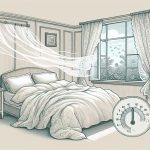Did you know that nearly 20% of people experience skin irritation from common workout fabrics? If you have sensitive skin, choosing the right moisture-wicking material can make a significant difference in comfort and performance. You might assume synthetic fabrics are the only option, but natural and innovative hypoallergenic materials offer excellent alternatives. Understanding these options will help you stay comfortable without compromising on moisture control.
Table of Contents
Key Takeaways
- Natural fibers like merino wool and silk offer excellent moisture-wicking and hypoallergenic benefits for sensitive skin.
- Tencel fabric provides softness, breathability, and hypoallergenic qualities, reducing friction and irritation on delicate skin.
- Merino wool regulates temperature, manages moisture, and resists odors without causing skin irritation.
- Silk’s smooth texture and moisture absorption make it ideal for preventing redness and itching in sensitive skin.
- Advanced synthetic blends such as polyester and nylon designed for sensitive skin balance moisture control with minimal irritation.
Understanding Hypoallergenic Moisture-Wicking Fabrics
Although moisture-wicking fabrics are known for keeping you dry, understanding their hypoallergenic properties is crucial if you have sensitive skin. You want fabrics that prevent skin irritation while managing moisture effectively.
Many moisture-wicking materials are synthetic, which might trigger allergic reactions or discomfort. That’s why choosing moisture-wicking fabrics made from natural fibers can be a better option. These natural fibers allow your skin to breathe and reduce the risk of irritation caused by trapped sweat and heat.
When you pick hypoallergenic moisture-wicking fabrics, you’re not just staying dry—you’re also protecting your skin from redness, itching, or rashes. So, always check the fabric composition to verify it suits your sensitive skin needs without compromising comfort or performance.
Merino Wool for Sensitive Skin: Benefits and Features
If you’re looking for a natural moisture-wicking fabric that’s gentle on sensitive skin, merino wool stands out as an excellent choice.
One of the key merino wool benefits is its ability to regulate temperature, keeping you cool when it’s warm and warm when it’s cool. Its fine fibers make it soft and non-irritating, perfect for those prone to itching or rashes.
Merino wool naturally regulates temperature and feels soft, ideal for sensitive skin prone to itching or rashes.
Among merino wool features, its natural breathability and moisture-wicking properties help keep sweat away from your skin, reducing irritation and discomfort.
Plus, merino wool is naturally hypoallergenic and resistant to odors, so you stay fresh longer.
Choosing merino wool means you get effective moisture management without sacrificing comfort or skin sensitivity.
Silk as a Natural Moisture-Wicking Fabric
Silk offers a luxurious option for those seeking natural moisture-wicking fabrics that won’t irritate sensitive skin. Thanks to its unique silk properties, it gently absorbs moisture while allowing your skin to breathe, reducing the risk of irritation. The natural benefits of silk include hypoallergenic qualities and temperature regulation, making it ideal for sensitive skin.
| Feature | Silk Properties | Natural Benefits |
|---|---|---|
| Moisture Control | Absorbs moisture efficiently | Keeps skin dry and comfortable |
| Softness | Smooth, gentle on skin | Prevents irritation |
| Hypoallergenic | Resistant to dust mites and allergens | Ideal for sensitive skin |
| Temperature Regulation | Maintains balance between warmth and coolness | Enhances comfort year-round |
Silk’s natural moisture-wicking and hypoallergenic traits make it a smart choice for sensitive skin.
The Role of Tencel in Comfortable and Hypoallergenic Clothing
While silk provides excellent moisture management and comfort for sensitive skin, Tencel offers another remarkable option worth considering.
You’ll appreciate Tencel benefits like its softness, breathability, and natural moisture-wicking properties that keep your skin dry and irritation-free. Derived from sustainably sourced wood pulp, Tencel is hypoallergenic, making it ideal if you’re prone to allergies or sensitive skin reactions.
Its smooth fibers reduce friction, preventing discomfort during wear. You’ll find Tencel applications ranging from everyday clothing to activewear and even bedding, all designed to enhance comfort while protecting delicate skin.
Synthetic Fabrics: Balancing Performance and Skin Sensitivity
Although synthetic fabrics often prioritize performance, you don’t have to sacrifice skin comfort when wearing them.
Modern polyester blends offer excellent moisture-wicking properties while minimizing irritation, making them a solid choice if you have sensitive skin. These blends combine durability and breathability, helping you stay dry without feeling itchy or uncomfortable.
If you’re wary of traditional nylon, look for nylon alternatives designed specifically for sensitive skin. These fabrics are softer and less likely to cause allergic reactions, yet still provide the stretch and moisture management you need during physical activity.
Frequently Asked Questions
How Do Moisture-Wicking Fabrics Affect Skin Hydration Levels?
Moisture-wicking fabrics help maintain your skin moisture by pulling sweat away, keeping you dry. Their fabric breathability lets air circulate, preventing excessive dampness that can disrupt hydration, so your skin stays balanced and comfortable.
Can Moisture-Wicking Fabrics Be Dyed Without Losing Hypoallergenic Properties?
You can dye moisture-wicking fabrics without losing hypoallergenic properties if you choose gentle dyeing techniques and hypoallergenic fabric treatments. Always avoid harsh chemicals to keep the fabric safe and comfortable for sensitive skin.
Are Moisture-Wicking Fabrics Safe for Newborn Baby Clothing?
Think of newborn safety like a gentle garden; you’ll want fabric types that breathe and protect. Moisture-wicking fabrics can keep your baby dry and comfy, but always check for softness and non-toxicity before dressing them.
How Do Laundering Methods Impact Moisture-Wicking Effectiveness?
You’ll find laundering techniques directly impact moisture-wicking effectiveness. Using gentle cycles, mild detergents, and avoiding fabric softeners preserves fabric care and helps maintain the fabric’s ability to wick moisture efficiently over time.
Do Moisture-Wicking Fabrics Reduce the Need for Frequent Showering?
Moisture-wicking fabrics can help you stay dry longer, potentially reducing shower frequency. However, maintaining good skin health still requires regular cleansing to remove sweat and bacteria, so don’t skip showers entirely.
- Can You Get Wrinkles Out of Clothes With a Hair Dryer? - June 9, 2025
- How to Get Wrinkles Out of a Shirt Quickly? - June 9, 2025
- Travel Wardrobe: Best Wrinkle-Free Fabrics for Suitcases - June 9, 2025







